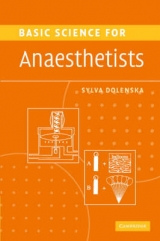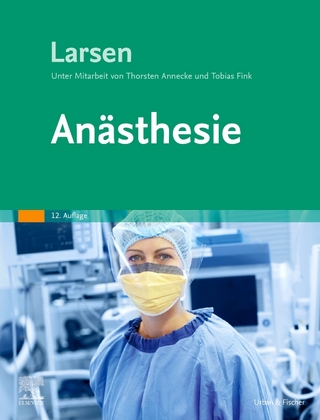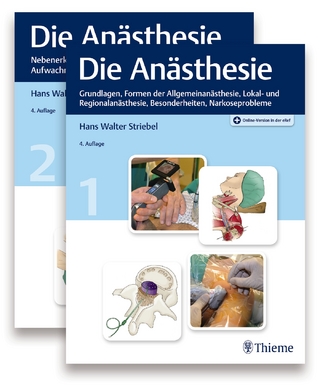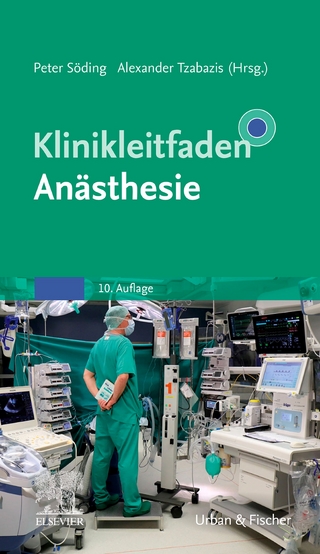
Anaesthetic Data Interpretation
Greenwich Medical Media Ltd (Verlag)
978-1-84110-008-1 (ISBN)
- Titel erscheint in neuer Auflage
- Artikel merken
There are numerous textbooks to choose from when preparing for the FRCA examination; the candidate suffers not from lack of information but rather from being inundated with it. He or she then has the task of information sorting and data compression, in order to memorise and utilise all this information. Graphical representation of data is an excellent form of data compression; graphs or drawings are frequently asked about topics, in the viva examination particularly. This book differs from most textbooks in that the text accompanies the pictures, rather than pictures complementing the text. In many cases, the text is simply a detailed 'caption' describing the graph or diagram, expanded on by some background information. For this reason, the graphs themselves are kept clear and easy to interpret, being labelled only with the names of the axes and their units, plus identification of any other key lines and symbols referred to in the text. The layout - each page of text opposite the relevant graph or graphs - conveys the essential link between picture and text, and makes orientation and understanding easier. The book follows the latest FRCA syllabus and attempts to show the relevance of basic science to clinical anaesthesia by using practical examples throughout. Though it is intended primarily for the FRCA candidate, it would also make an excellent 'aide-memoire' for clinical tutors and all practising anaesthetists who undertake teaching.
Sylva Dolenska was born in Prague, Czechoslovakia and attended medical school at Charles University, Prague. After moving to Britain in 1982, she trained as an anaesthetist, and has been a consultant since 2000. She is currently Consultant Anaesthetist at William Harvey Hospital in Ashford, Kent, and has also acquired the KSS Deanery Certificate in Teaching. Her other key professional interests are airway management and obstetric anaesthesia.
Part I. Physics, Anesthetic Apparatus, Mathematics, Statistics: 1. Gas compression, relationship of volume, pressure and temperature; 2. Real gas compression; 3. Flow and resistance; 4. Heat, vaporization and humidification; 5. Simple mechanics 1: mass, force, pressure; 6. Simple mechanics 2: work and power; 7. Gas supply and pressure; 8. The circle system; 9. The Mapleson A (Magill) breathing system; 10. The T pieces; 11. Lung filling with automatic lung ventilators; 12. Exponentials 1: the curves; 13. Exponentials 2: properties of exponential decay curve; 14. Mathematical concepts; 15. Presentation of data; 16. Descriptive statistics; Part II. Clinical Measurement Cardiovascular System: 17. Basic measurement concepts; 18. Electromanometers, frequency response and damping; 19. Pulse oximeter principle; 20. Oxygen content and oxygen tension measurement; 21. Capnography; 22. [H+], pH and its measurement; 23. Principles of measurement of volume and flow in gases and liquids; 24. Cardiac output measurement by thermal dilution technique; 25. Measurement of the static properties of the lung; 26. Measurement of lung volumes; Part III. Physiology: 27. ECG and blood pressure waveforms; 28. Cardiac cycle: pressure-volume relationship; 29. Control of cardiac output, regulation of cardiac function; 30. Coronary autoregulation; 31. Cerebral blood flow, autoregulation, cerebral elastance curve; 32. Blood pressure and blood volume relationship; 33. Cardiovascular effects of IPPV; Part IV. Respiratory System: 34. Respiratory mechanics 1: static properties, factors affecting compliance, closing volume; 35. Respiratory mechanics 2: dynamic properties, factors affecting resistance; 36. Ventilation - perfusion relationship; 37. Gas R line; 38. Oxygen dissociation curve; 39. Oxygen cascade, isoshunt lines; 40. Anatomy; Part V. Pharmacology: 41. Minimal alveolar concentration; 42. Pharmacokinetics; 43. Pharmacodynamic effects of drugs; 44. Uptake of inhaled anaesthetics; 45. Receptor types.
| Erscheint lt. Verlag | 1.1.2000 |
|---|---|
| Zusatzinfo | 50 Halftones, unspecified |
| Verlagsort | Cambridge |
| Sprache | englisch |
| Maße | 158 x 234 mm |
| Gewicht | 379 g |
| Themenwelt | Medizin / Pharmazie ► Medizinische Fachgebiete ► Anästhesie |
| Medizin / Pharmazie ► Medizinische Fachgebiete ► Notfallmedizin | |
| ISBN-10 | 1-84110-008-0 / 1841100080 |
| ISBN-13 | 978-1-84110-008-1 / 9781841100081 |
| Zustand | Neuware |
| Haben Sie eine Frage zum Produkt? |
aus dem Bereich



